
How Do Glasses Work?
It may surprise you to learn that if you wear glasses, you are in the majority. In the United States, the number of adults that require vision correction outnumbers those that do not. Three out of four American adults wear glasses or contacts; interestingly, this number includes more women than men. This number increases dramatically for adults over 55, with a whopping 91.4% requiring vision aid. [1]
Jump Ahead
- How Eyesight Works
- Vision Problems
- How Your Eyeglass Prescription Works
- The Optician and Lab Finish the Process
- Resources
How Eyesight Works
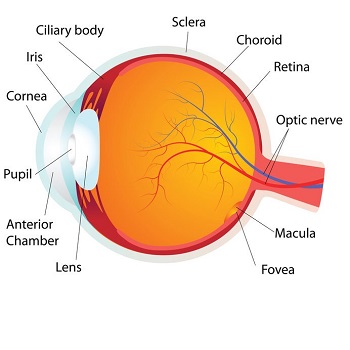
To understand how glasses or corrective lenses work, you must first understand how your eyes interpret images. Light is a necessary component of sight. When light reflects off an object, it enters your eyes through the cornea. The cornea refracts or bends the light before it passes through the lens, which further refracts the light toward the retina at the back of the eye. The retina is a layer of tissue that contains millions of light-sensing nerve cells. These cells convert the light into electrical impulses that the optic nerve sends to the brain. When any one of these parts of the eye is defective, light does not refract properly, and vision problems can occur. [2]
Vision Problems
There are several vision defects caused by refractive errors that glasses can easily correct. In each, light entering the eye is not refracted normally, causing distorted vision.
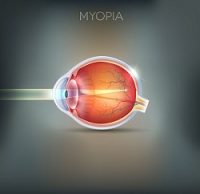
Myopia. Myopia is more commonly known as nearsightedness. Those who are nearsighted can see things near but have trouble seeing things that are far away. These people would require corrective lenses to drive, for example.
In myopia, when light enters the eye, the image stops in front of the cornea rather than on it causing distant objects to appear blurred. Myopia occurs when the cornea is too steep or the eye is longer than normal. [3]
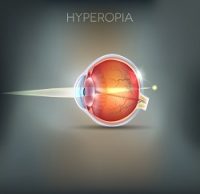
Hyperopia. Hyperopia is more commonly known as farsightedness. Farsighted people can easily see things far away but cannot see something close up. These people would require glasses for reading, for example.
In hyperopia, when light enters the eye, the image extends beyond the cornea rather than on it causing close objects to appear blurred. Hyperopia occurs when the cornea is too flat or the eye is shorter than normal. [4]
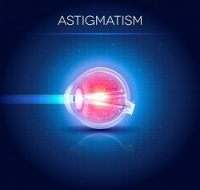
Astigmatism. Astigmatism is an imperfection of the eye’s lens or cornea. The cornea may be irregularly shaped, or the problem may rest with the curvature of the lens.
In astigmatism, light is distorted and refracted to multiple focal points when light enters the eye.
This imperfection causes both near and far objects to appear blurry or distorted. [5]
How Glasses Work to Correct Vision – Refractive Errors
Any lens, for example, a telescope, a magnifying glass, or an eyeglass lens, works by focusing light at a specific meeting point. There are two major categories of lenses, converging and diverging. A converging lens focuses rays of parallel light into a single point. (Top image on the diagram below) A diverging lens diverges parallel rays of light away from a point. (Bottom image on the diagram below) [6]
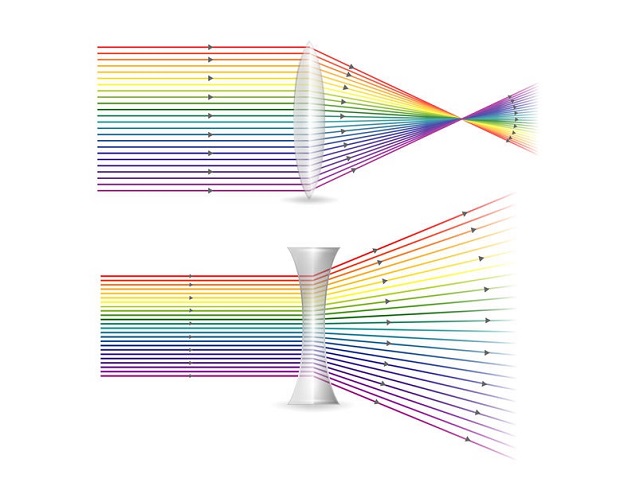
The lenses in eyeglasses work by refracting light to compensate for the refractive error in your vision using either a converging lens or a diverging lens. Simply put, your optometrist will measure how to create a lens that will refract the light exactly, so it hits your retina as closely as possible for the clearest vision.
Correction for Myopia. If you have myopia, the lenses in your eyeglass prescription will be diverging lenses. A diverging lens is concave. This means that at least one surface of the lens will curve inward. It’s thinner at its center and spreads out light rays that are refracted through it. Concave lenses will make faraway objects clearer. [7]

Correction for Hyperopia. Adversely, if you have hyperopia, the lenses in your eyeglass prescription will be converging lenses. A converging lens is convex. Convex lenses are thicker in the middle and converge light. Like a magnifying glass, convex lenses will make close objects clearer. [8]

Correction for Astigmatism. Cylindrical lenses are used to correct astigmatism. These lenses curve more in one direction than the other. [9]

How Your Eyeglass Prescription Works
Now that you understand the fundamentals of vision and light refraction, you can better understand how your optometrist corrects your particular refractive error and how glasses work to correct vision.
Your eyeglass prescription will add or subtract focusing power to the eye’s cornea or lens. Your doctor’s job is to find the exact measurements to make this happen. These are the measurements you will find on your prescription. [10]
OD (Oculus dexterous) refers to measurements of the right eye.
OS (Oculus sinister) refers to measurements of the left eye.
Measurements are calculated in diopters. A (-) symbol signifies nearsightedness. A (+) symbol signifies farsightedness.
Sphere. The measurement to show the severity of nearsightedness or farsightedness.
Cylinder. The amount of astigmatism.
Axis. The direction of astigmatism in degrees.
The Optician and Lab Finish the Process

Now that you have your prescription, it’s up to the optician and lab to make it a reality. The optician’s job is to interpret the optometrist’s measurements and create the perfect lenses for the frames you choose. He will help to choose the right materials for your specific needs and lifestyle. After choosing the frames, he will make exacting mathematical calculations to send to the lab for grinding the lenses to the precise curve to refract light for your individual prescription. He also instructs the lab on orienting the lenses within the frame in relation to your eyes. [11]
And there you have it! That’s how glasses work to correct vision!
Resources – “How Glasses Work to Correct Vision”
- [1] American Vision Council – “Trends in Vision Correction: Is America Seeing Clearly?“
- [2] American Optometric Association – “How Your Eyes Work.”
- [3] American Academy of Ophthalmology – “Nearsightedness: What Is Myopia?”
- [4] American Academy of Ophthalmology – “Farsightedness: What Is Hyperopia?“
- [5] American Academy of Ophthalmology – “What Is Astigmatism?“
- [6] [8] [9] The Physics Hypertextbook – “Spherical Lenses.”
- [7] Universe Today – “Concave Lens.”
- [10] University of Rochester Medical Center – “Eyeglasses and Contact Lenses.”
- [11] Roane State – “What Do Opticians Do?”
DISCLAIMER: THIS WEBSITE DOES NOT PROVIDE MEDICAL ADVICE
The information, including but not limited to text, graphics, images, and other material on this website, is for informational purposes only. No material on this site is intended to be a substitute for professional medical advice, diagnosis, or treatment. Always seek the advice of your physician or other qualified healthcare providers with any questions you may have regarding a medical condition or treatment before undertaking a new healthcare regimen, and never disregard professional medical advice or delay in seeking it because of something you have read on this or any other website.





